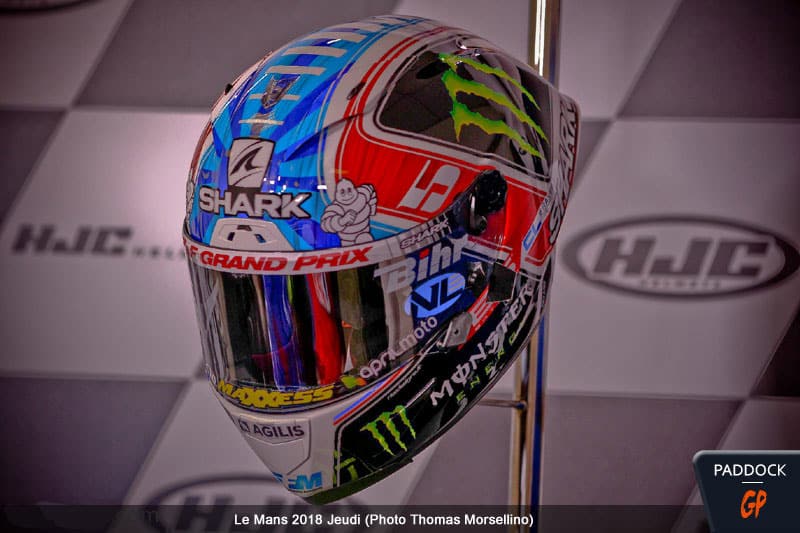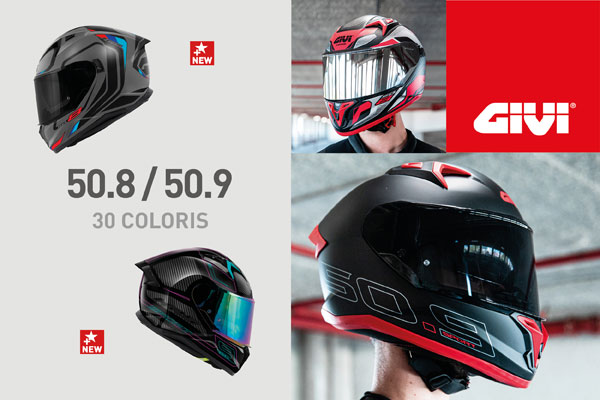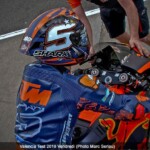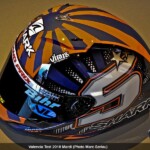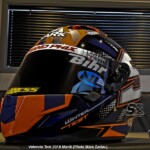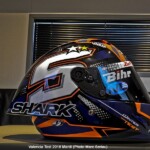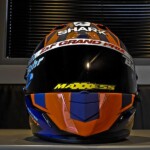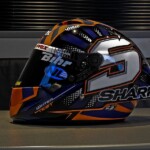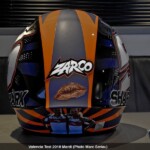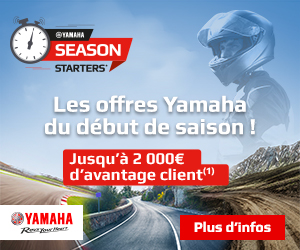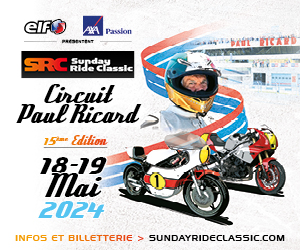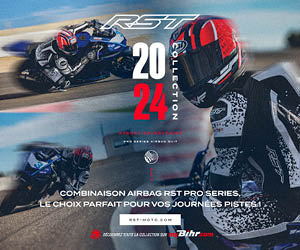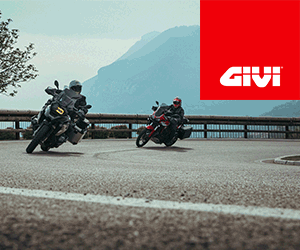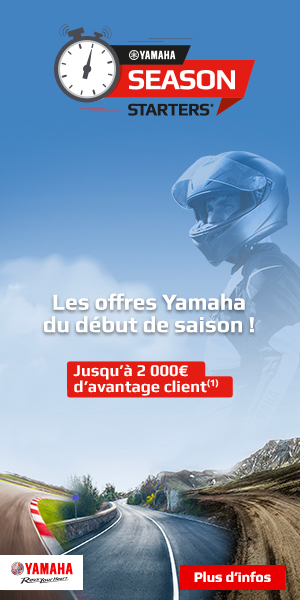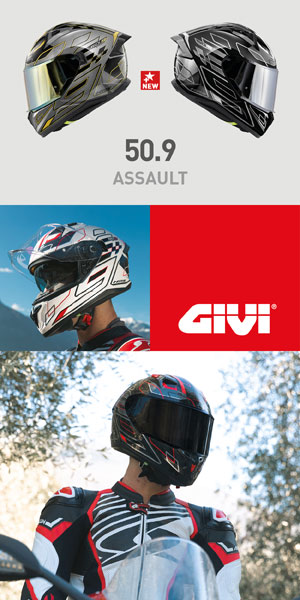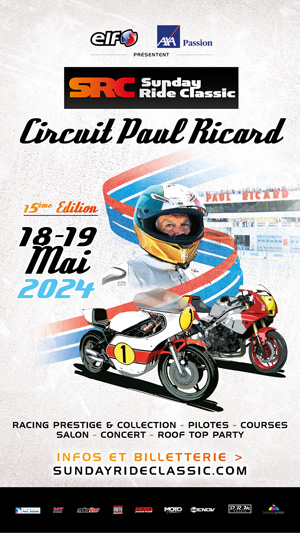Since his Grand Prix debut, Johann Zarco has always used his helmets as a real means of communication, whether to thank a partner or pay tribute to a person important to him.
In its early days, from the 125 cc era, Gabor Talmacsi, Jean Alesi, Jacques Bolle and Jacky Hutteau were for example commemorated while in recent seasons many companies were entitled to their dedicated version of the cover. head of the French driver: Bihr, Michelin, Maxxess, Agilis, etc.
The quality of production has never been lacking but, over the years, the decorations of the helmets Shark RACE-R PRO GP used by the double world champion have become increasingly sophisticated and attractive.
We took the opportunity to ask David Matray, who skillfully handles the gun under the name Aéro Jam, to explain his work to us in detail: “I receive the helmets ready, with the aerodynamic spoiler already installed and putty. This step is now done at Shark, whereas the year before, we had to do it ourselves. So I do a light sanding to make sure the paint adheres well, which starts with a basic coat of white. Then, little by little, I mask the different areas which receive the different colors depending on the design.”
Who does the design?
“The design of Johann Zarco's helmets is made by Vyrus Graphics. I regularly talk to him on the phone so that the adaptation of the design, which is done flat, corresponds to the painting which is ultimately in 3D.”
Do you receive a document with the helmet on all sides?
“It depends on the times, but generally yes! A right view, a left view, a front view, a top view and sometimes a back view. So I take a helmet that I have already painted white, I take measurements and, from the design, I draw what we call surveys taking into account the sponsors which are very important at this level of the competition. This way, I know where I am going to make the 2 helmets that will be used during a race.”
Do you make 2 helmets each time?
“Yes, a special series is always 2 helmets for a Grand Prix. Just in case, you never know: it's better to have one in advance. Afterwards, there is Johann's usual helmet. I had to ride 6 to Le Mans, then I restocked it as it damaged them. But in 2018 he used a lot of special series. It’s quite nice.”
How do you go about superimposing layers because, as we can attest, at the end we don't feel any extra thickness?
“Actually, I do the painting part of the helmet first, that is to say the colors, the edging and all those things. Generally, everything that is a sponsor is in adhesive because they respect a very precise graphic charter and we are not allowed to paint them. So I paint the helmet without any sponsor, then I varnish it, I re-sand it to have a perfectly smooth surface, I apply my adhesives then I varnish again behind. Generally, I re-varnish twice to try to drown out the stickers but you shouldn't insist too much because, afterwards, the helmet gains weight. So I try to be on the limit: you can still feel the stickers a little bit but it’s okay, it’s not too heavy.”
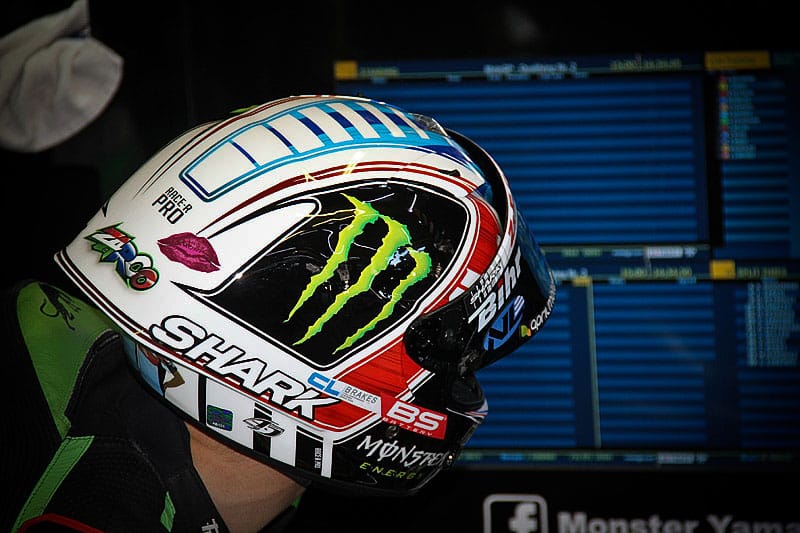
Exactly, do we have an idea of the weight of the decoration?
“At the beginning, I weighed the helmets, but I stopped since I'm no longer the one putting the spoilers. But we will say that it varies between 200 and 400 grams. And yes, if you really go like a mule, you can make the helmet too heavy. I'm very careful about that, because at these speeds, the weight is very important, both in terms of performance and also for the driver's neck.
Between the white helmet and the helmet ready to be delivered, how many hours of work are there?
“Usually I work them in pairs because it’s rare that I only do one. Let's say that it takes me 2 days of work including the finish and the varnish. Afterwards, I reassemble all the ventilation, glue the joints and deliver it to Shark. They are the ones who go back inside. Depending on the decoration it may take longer, but usually it's around 3 days. It must be said that I am also a bit of a maniac (laughs).”
For each special operation, there are 2 helmets. We can imagine that one goes to the sponsor, but the other? Is there a secret museum?
“(Laughs) I don’t really know but I think Johann must have his own museum, yes, to decorate his home.”
Is the paint used a water-based paint?
" No. Water-based painting has evolved well, but we still have tears or traces when we apply the masks, for example, to break up the different areas. So I work with polyurethane paint and finish with a fairly sturdy ceramic varnish. I also use the same thing for my average customers and it lasts over time without any problem.”
Do you have other “non-ordinary” customers?
“Yes, for example, I also now take care of Sam Lowes helmets, in design and painting, and by Miguel Oliveira. ».
Is the helmet cooked once finished?
" We can ! It can be put in an oven at 60° but I avoid it, to avoid any possible reaction with the spoiler or its putty. Instead, I let it dry in the cabin at room temperature, and with the ceramic varnish, the helmet is dry to the touch in 20 minutes.”
How do you end up being the painter of Johann Zarco's helmets?
“In fact, by training, I am a bodybuilder-painter-trainer. But I've been on my own for 15 years and I've always decorated motorcycles, tanks and helmets alongside my first specialty. Gradually, decoration took precedence over ordinary paint, and now helmet paint takes precedence over motorcycle paint. Today, I do almost 80% helmets, and that’s what I want.”
Special thanks Aero Jam
New address: 430 Bd de Lery, 83140 Six-Fours Les Plages










